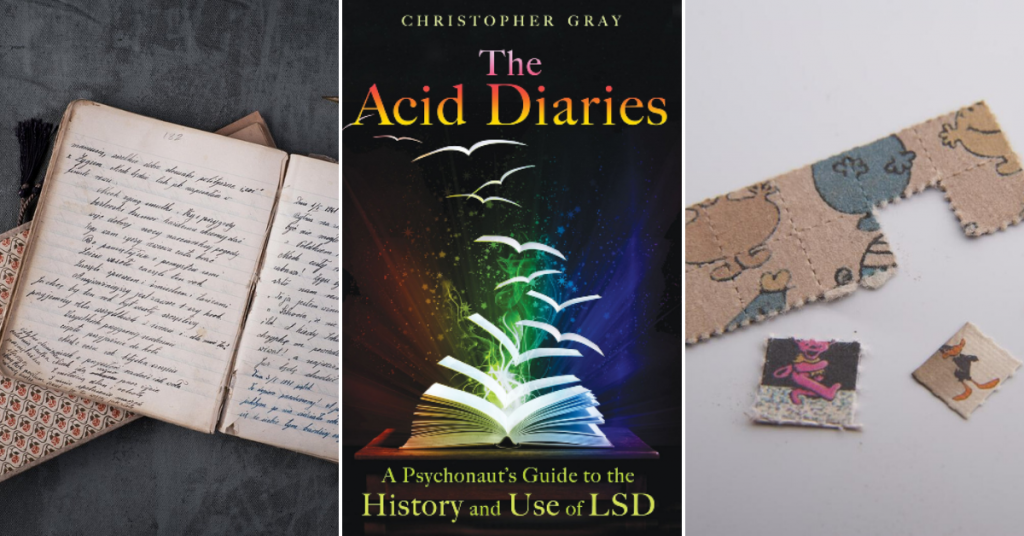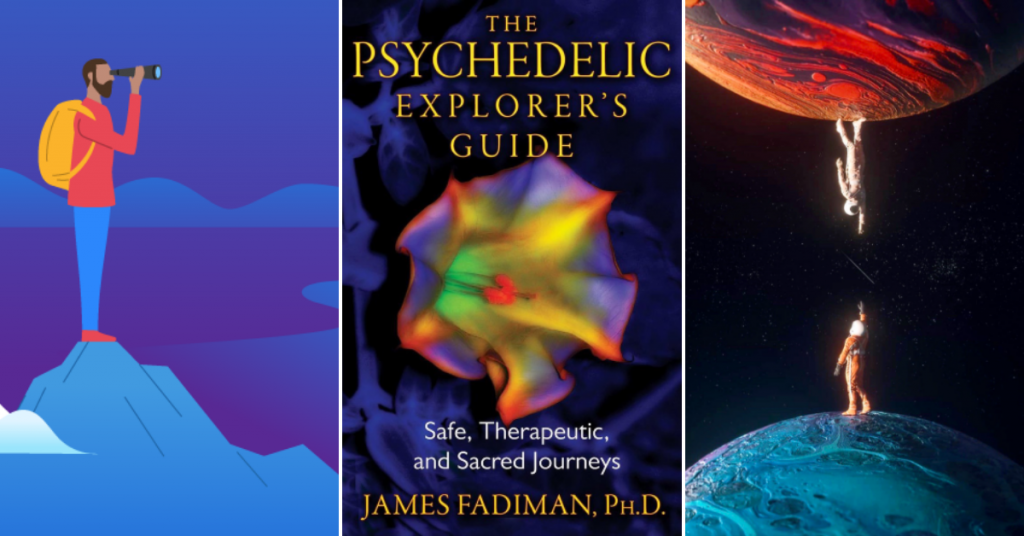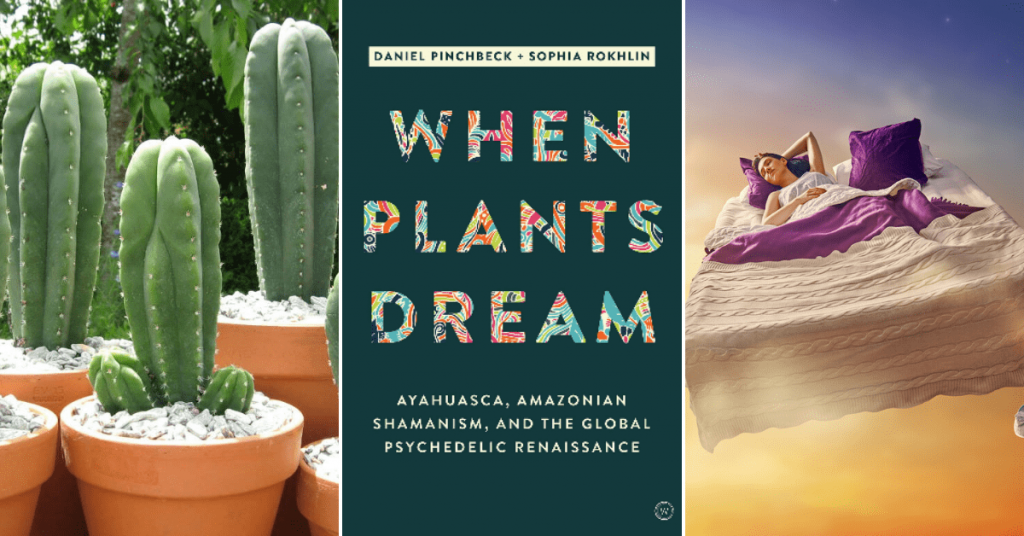Being one of the most powerful psychedelics we know, it is not strange that DMT has become the subject of numerous speculations over the years. Theories linking this molecule to the pineal gland, to dreams or near-death experiences have circulated persistently among users and researchers – yet the scientific evidence just doesn’t seem to be there.
It has been established that DMT occurs in many organisms endogenously, like plants, animals and humans. Besides that, much has yet to become established science in the academic world. Is DMT synthesized in the pineal gland? If so, what is its function? Is it involved in generating dreams or normal consciousness? Is it behind so-called near-death experiences?
We approached researcher Enzo Tagliazucchi to help us bring some clarity and a scientific perspective to these questions. Tagliazucchi is a neuroscientist and professor at the University of Buenos Aires. He will be speaking about his research and the first Electroencephalography (EEG) study of DMT in naturalistic settings at ICPR 2020.
This is the first part of a three-part interview series with Prof. Enzo Tagliazucchi
OPEN Foundation: Twenty years ago, Rick Strassman popularized DMT as the “Spirit Molecule”. In his popular book, he made the claim that this psychedelic compound is endogenously synthesized in the human pineal gland. What led him to this hypothesis?
Enzo Tagliazucchi: It would not be strange if DMT would actually be synthesized in the pineal gland because melatonin, a molecule that is pretty similar in its structure compared to DMT, is released there. All the necessary enzymes in the corresponding metabolic pathway are present in the pineal gland. You have all these coincidences that seem to suggest that it is a natural process that is creating the molecule, and that this process can take place in the pineal gland.
Strassman was, in fact, interested in melatonin research at first and then came across DMT. From there, he started to convince himself that it was synthesized in the pineal gland and started wondering about its function. People have been trying to find a role for DMT from the moment it became obvious that it is an endogenous molecule, for instance, some have the hypothesis that DMT is actually a neurotransmitter still without a known receptor (the sigma receptor was considered as a candidate for some time but eventually it was abandoned). Of course, whatever the function was, they conjectured, it had to be something related to the phenomenology of the psychedelic state.
In his investigations, Strassman came across these really strange experiences reported by his research participants, which he actually describes as a kind of shock for him. Confronted with this bizarre information, he hypothesized that DMT is present in the brain to signal certain important moments in life, and that these moments are experienced as strange DMT-like experiences, such as birth and death. This is why he coined the popular phrase “the spirit molecule” in reference to DMT.
Last year, a research team from the University of Michigan led by Jimo Borjigin reported concentrations of DMT in rats’ brains to be similar to that of other neurotransmitters like serotonin during induced experimental cardiac arrest. What are the implications of these findings and what do we know about the endogenous levels of DMT in the human brain?
Recently there was some controversy because of this paper, in which Strassman was actually co-author, showing in an animal model that you can find large amounts of DMT produced near the moment of death.
David Nichols tried to refute this hypothesis years ago arguing that even if DMT is actually synthesized in the pineal gland, you will never get sufficiently high concentrations of endogenous DMT to ever produce a psychedelic-like experience. That was the end for a while, and then came this article which Strassman and others took as evidence to support his theory.
David Nichols again published a rebuttal arguing that the finding of high amounts of DMT is not really conclusive because at that critical moment you get a massive release of several neurotransmitters. If you have twice the usual concentration of DMT, then you also have twice the usual concentration of serotonin. And since serotonin is competing with DMT and it has a higher affinity for all serotonin receptor sub-types, then why would you get an endogenous DMT trip considering these difficulties in binding to serotonin receptors?
I think if I had to bet money, I would say that there is DMT in the pineal gland. It is a very simple tryptamine and you have a lot of different possible pathways to get it. All the chemicals you need for the synthesis of DMT can be found in the pineal gland. I would even bet that when you have hypoxia or if there is a critical injury in the brain, there is a spike in DMT concentration. But at such a moment, you have spikes of several neurotransmitters. However, if somebody finds a high spike of DMT alone, that would be a remarkable finding.
I think that more research is needed because it is really strange that DMT is in the brain. People should keep doing this research and should keep asking: Why is DMT there? What does it do? What receptors does it bind to? What is its role? These questions are important, even if the findings so far have been, for the most part, negative.
We don’t really have any proof at all that Strassman’s theories are more than attractive hypotheses. Something valuable about Strassman’s work is that it made a lot of people think for the first time about the possibility of endogenously triggered altered states of consciousness. Unfortunately, I think there is yet nothing to the claim that DMT is behind these experiences.
It seems that Borjigin’s research has been welcomed by DMT enthusiasts who link this molecule to dreams and normal consciousness. If it is present in the human brain at significant levels, could DMT be considered a neurotransmitter playing a role in generating ordinary consciousness or in dreaming, as it has been claimed?
The challenge is to find DMT in a sufficiently high concentration to produce such effects. You would need around 25 mg of DMT being produced in a short period of time for something like that to happen in your consciousness and, apparently, there is no way that can happen. The endogenous concentrations are in the microgram range, below the active levels by orders of magnitude. The reason why it can’t happen is not only because researchers have not found such high levels, it is because essentially the metabolic pathways do not seem to be able to support that massive biosynthesis.
Similarly, it does not seem that DMT is produced with a sufficiently high concentration to be involved in dreaming, and so on. I do not think it is even needed to explain the phenomenology of dreaming. We understand more or less the neurochemistry of dreaming and serotonin, in fact, tends to be blocked during REM sleep. So the neurochemistry does not seem to suggest at all that 5-HT2A receptor activation by any molecule, let alone one in such small quantities, is responsible for dreaming. This does not preclude, of course, that the phenomenology of dreaming and psychedelic states are very similar. You might get to the same effect following different routes.
If it is in the concentrations it is suspected to be in, there is no way it can influence consciousness. That is the current state of knowledge.
See Enzo’s talk titled The neural and psychological correlates of inhaled N,N-dimethyltryptamine (DMT) in natural and ceremonial settings at ICPR2020.








